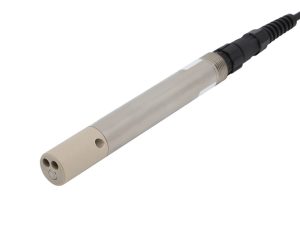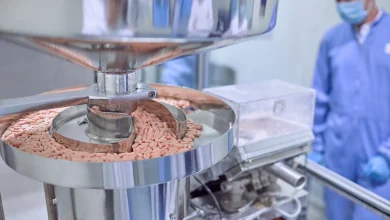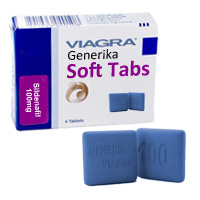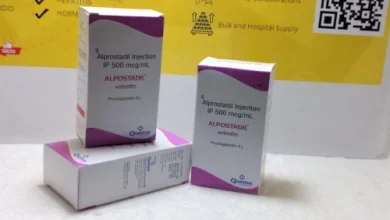Understanding Water Conductivity Meters: Key Applications and Benefits

Water is one of our most essential resources, and ensuring its quality is critical for both environmental health and public safety. One of the primary ways to assess water quality is by measuring its conductivity. Water conductivity meters are invaluable tools that help us measure the electrical conductivity of water, which can indicate the concentration of dissolved ions such as salts, minerals, and other contaminants. In this blog, we’ll explore what Water conductivity meter are, how they work, their various applications, and the benefits they bring to a range of industries and environmental practices.
What is Water Conductivity?
Water conductivity refers to the ability of water to conduct an electrical current. This ability is determined by the presence of dissolved ions in the water, which are typically salts, minerals, or pollutants. The more ions there are in the water, the higher its conductivity. Conductivity is usually measured in microsiemens per centimeter (µS/cm) or millisiemens per centimeter (mS/cm). It provides an indirect but effective way to evaluate the water’s overall quality, especially in terms of its chemical composition.
The conductivity of pure water (like distilled water) is very low because it contains few ions. Conversely, water that contains high levels of salts or minerals, such as seawater, will have a high conductivity level. This makes conductivity a useful measurement for determining whether water is fresh or saline, as well as for assessing the presence of contaminants.
How Does a Water Conductivity Meter Work?
A water conductivity meter is a portable or stationary device used to measure the electrical conductivity of water. The basic principle behind its operation is relatively simple: two electrodes are placed in the water sample, and the meter sends a small electrical current through the water. The dissolved ions in the water conduct the current, and the meter measures the resistance to the current. The more ions present, the lower the resistance and the higher the conductivity reading.
Water conductivity meters are typically equipped with a probe that contains two electrodes. The meter then uses these electrodes to measure the conductivity and display the result in numerical form. Modern meters often come with automatic temperature compensation (ATC) to adjust readings according to the temperature of the water, as conductivity can vary with temperature.
Key Applications of Water Conductivity Meters
Water conductivity meters are widely used in various fields and industries to monitor water quality, identify contaminants, and ensure compliance with environmental and health standards. Below are some of the key applications:
1. Environmental Monitoring and Research
Water conductivity meter are essential tools in environmental research, particularly for monitoring the health of rivers, lakes, and oceans. Environmental scientists use conductivity meters to assess the overall water quality, detect pollution, and track changes in water bodies over time. For instance, a sudden increase in conductivity in a river may signal an influx of contaminants such as industrial waste, agricultural runoff, or sewage.
In addition to detecting contamination, conductivity meters are used to measure the salinity of water, which is crucial for studying ecosystems like estuaries and coastal environments. These measurements help researchers understand how saltwater intrusion affects freshwater resources, which is important for managing water supplies in coastal areas.
2. Water Treatment Plants
In water treatment plants, maintaining the quality of water is a priority. Water conductivity meters are used to monitor the water during the treatment process, ensuring that it meets the necessary standards before being distributed to consumers. Conductivity measurements can indicate the presence of various contaminants, including heavy metals, chemicals, and organic substances.
For example, if the conductivity of the water increases beyond a certain threshold, it could suggest the presence of high levels of salts or dissolved solids, which may need to be removed before the water is suitable for consumption. Regular conductivity monitoring helps water treatment facilities make necessary adjustments to their purification processes, ensuring the delivery of clean, safe drinking water.
3. Aquaculture and Fish Farming
In aquaculture, the health of aquatic life depends heavily on the water quality. Water conductivity meters are vital tools for monitoring the salinity and general health of water in fish farms, shrimp farms, and other aquaculture operations. Since different species of fish and shellfish thrive in specific water conditions, regular conductivity measurements help farmers create and maintain optimal environments for their livestock.
For example, fish species like salmon prefer freshwater, while species like sea bass require brackish or saltwater. Conductivity meters allow farmers to ensure the salinity levels of their ponds or tanks are within the ideal range for the species they are farming, promoting healthy growth and minimizing stress on the animals.
4. Agriculture and Irrigation
In agriculture, water quality is a critical factor in ensuring healthy crop production. The salinity of irrigation water can significantly impact plant growth, with high salinity levels leading to poor plant health or even crop failure. Water conductivity meters help farmers monitor the salinity of irrigation water, ensuring that it is suitable for their crops.
In areas where water sources are limited, conductivity meters can also be used to assess the quality of reclaimed or recycled water used for irrigation. This ensures that the water does not contain harmful levels of dissolved solids that could affect soil fertility or plant health.
5. Industrial Applications
Water conductivity meters are commonly used in industrial applications, particularly in industries that rely heavily on water for production processes, such as power generation, pharmaceuticals, and food processing. In these industries, maintaining proper water quality is essential for operational efficiency and product quality.
For example, in power plants, conductivity meters are used to monitor the quality of cooling water used in boilers and heat exchangers. If the conductivity of the water rises too high, it can indicate the accumulation of minerals and scale, which could lead to equipment corrosion or reduced efficiency. Similarly, in the pharmaceutical industry, water conductivity is monitored to ensure that the water used in the production of drugs meets stringent purity standards.
6. Educational Institutions and Laboratories
Water conductivity meters are also important tools in educational settings and scientific laboratories. Students and researchers use conductivity meters in experiments to understand the effects of different substances on water quality. By measuring the conductivity of various solutions, they can better grasp the relationship between dissolved ions and water properties.
Key Benefits of Water Conductivity Meters
1. Fast and Reliable Measurements
Water conductivity meters provide quick and accurate results, making them ideal for real-time monitoring. This is especially valuable in situations where immediate action is needed to address changes in water quality, such as in water treatment plants or aquaculture operations.
2. Cost-Effective and Easy to Use
Compared to other water quality testing methods, conductivity meters are relatively affordable and easy to use. Many models are portable and require minimal setup, making them ideal for both fieldwork and lab testing. Their simplicity allows non-experts to use them without extensive training, making water quality monitoring accessible to a wide range of users.
3. Versatility Across Applications
Water conductivity meters can be used in a wide variety of settings, including environmental monitoring, industrial applications, agriculture, and water treatment. Their versatility makes them essential tools in many industries where water quality is a key concern.
4. Real-Time Data and Monitoring
Many modern conductivity meters come with features that allow for continuous monitoring and remote data collection. This enables operators to track changes in water quality over time and take corrective actions when necessary. The ability to receive real-time data enhances decision-making and prevents issues before they escalate.
Conclusion
Water conductivity meters are indispensable tools for monitoring water quality across a wide range of industries, from environmental research to industrial applications. By providing quick, accurate, and real-time measurements, these devices help identify contaminants, monitor salinity levels, and ensure that water is safe for consumption or use in various processes. Whether it’s protecting aquatic ecosystems, optimizing irrigation systems, or ensuring the quality of drinking water, conductivity meters play a critical role in safeguarding this vital resource.
As technology continues to advance, we can expect water conductivity meters to become even more efficient, portable, and integrated with other environmental monitoring systems. The future of water quality monitoring looks brighter, and these devices will continue to be a key tool in ensuring that our water resources remain clean and safe for generations to come.




